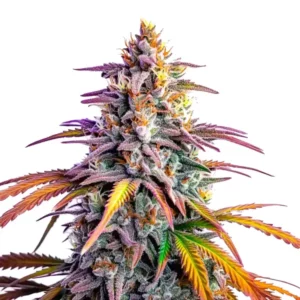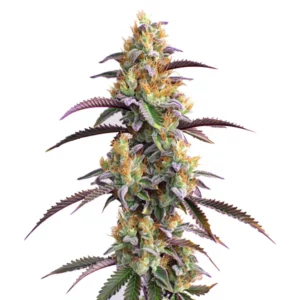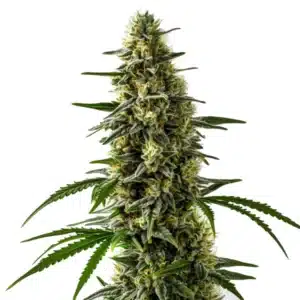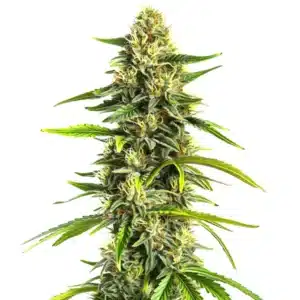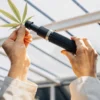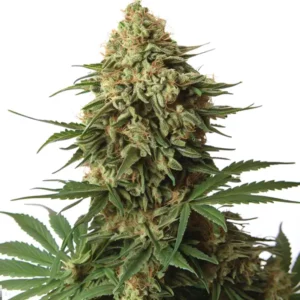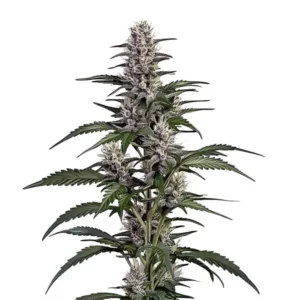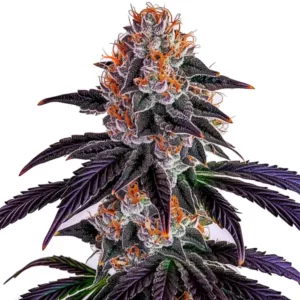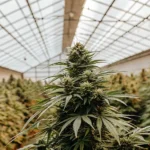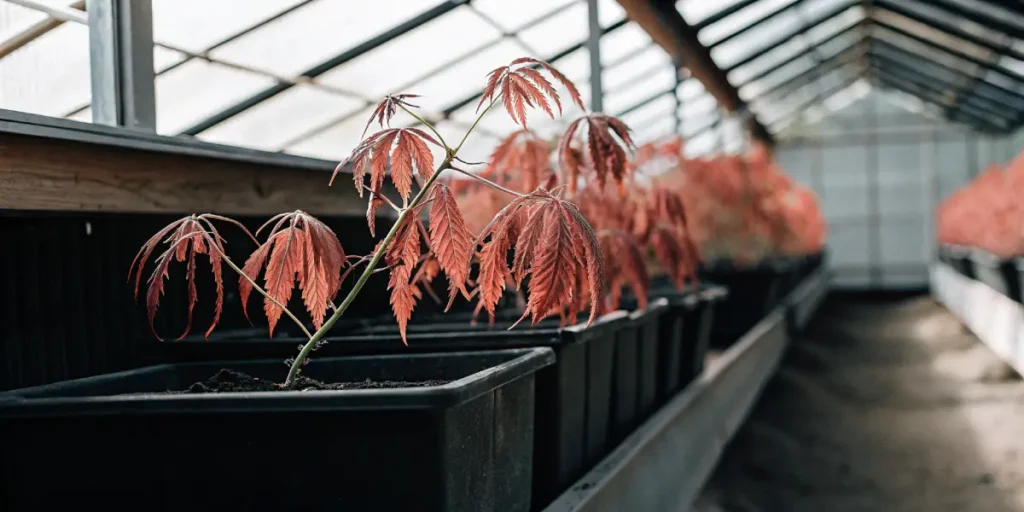
Water Stress and Terpene Expression in Cannabis
Water stress and terpene expression in cannabis can be a game-changer for both novice and seasoned growers. These natural compounds, terpenes, give cannabis its distinct aroma and flavor. When you introduce water stress, it influences these terpenes in fascinating ways. It’s like giving your plants a little nudge to express themselves more boldly.
Water stress doesn’t mean you’re depriving your plants. Instead, you’re carefully controlling water availability to enhance the terpene profile. This technique taps into the plant’s survival instincts, pushing it to produce more aromatic compounds. The impact of water stress on cannabis terpene profile can transform ordinary buds into something extraordinary.
Recommended Strains
GG4
|
|
THC | 27% (High) |
|
|
Type | Feminized |
|
|
Yield | High |
|
|
Phenotype | 40% Indica / 60% Sativa |
Blue Dream
|
|
THC | 17% - 24% (Medium) |
|
|
Type | Feminized |
|
|
Yield | High |
|
|
Phenotype | 50% Indica / 50% Sativa |
Growers have found that specific strains respond uniquely to water stress. For instance, the “Gorilla Glue 4” from Blimburn Seeds can exhibit enhanced terpene synthesis under controlled drought conditions. This makes each puff more flavorful and potent, a true delight for the senses.
Impact of Water Stress on Cannabis Terpene Profile
Water stress, when applied purposefully, can lead to a richer terpene profile. It’s akin to coaxing more color out of a painting. The plant, sensing less water, shifts its energy to producing terpenes, thus enhancing its aroma and flavor. This is how the relationship between water availability and cannabis terpene production unfolds.
For growers, it’s about finding that sweet spot. Too much stress and the plant suffers; too little, and there’s no change in terpene levels. Successful growers often follow a structured irrigation schedule. They know when to hold back water and when to supply it, optimizing cannabis terpene levels through irrigation management.
The impact of water stress on cannabis terpene profile is not just a theoretical concept but a practical approach that growers can implement. Knowing the nuances of water stress allows growers to fine-tune their methods to achieve the desired terpene outcomes. It’s a delicate balance that requires knowledge and attention to detail.
Moreover, it’s important to consider environmental factors such as temperature and humidity, which can interact with water stress to further influence terpene expression. By integrating these variables into the growing strategy, cultivators can gain more control over the final terpene profile, enhancing both the quality and marketability of their harvest.
Promos & Deals
Cannabis Terpene Expression Under Drought Conditions
Introducing your plants to drought-like conditions might sound risky, but when done right, it’s beneficial. Cannabis terpene expression under drought conditions is a technique that can elevate your growing game. Think of it as teaching your plants to thrive under pressure, bringing out their best traits.
Strains like “Blue Dream” from Blimburn Seeds have shown remarkable resilience and terpene enhancement when exposed to controlled water deficits. This doesn’t mean leaving them parched; instead, it’s about precision and timing. Adjusting water levels strategically can lead to a more pronounced terpene profile.
Cannabis terpene expression under drought conditions requires a deep knowing of the plant’s response mechanisms. By carefully observing the plant’s behavior and adjusting the water supply accordingly, growers can optimize terpene production without compromising the plant’s health.
Furthermore, the experience of managing cannabis terpene expression under drought conditions can vary significantly between indoor and outdoor cultivation. Each environment presents unique challenges and opportunities, requiring growers to adapt their techniques to make the most of the conditions at hand.
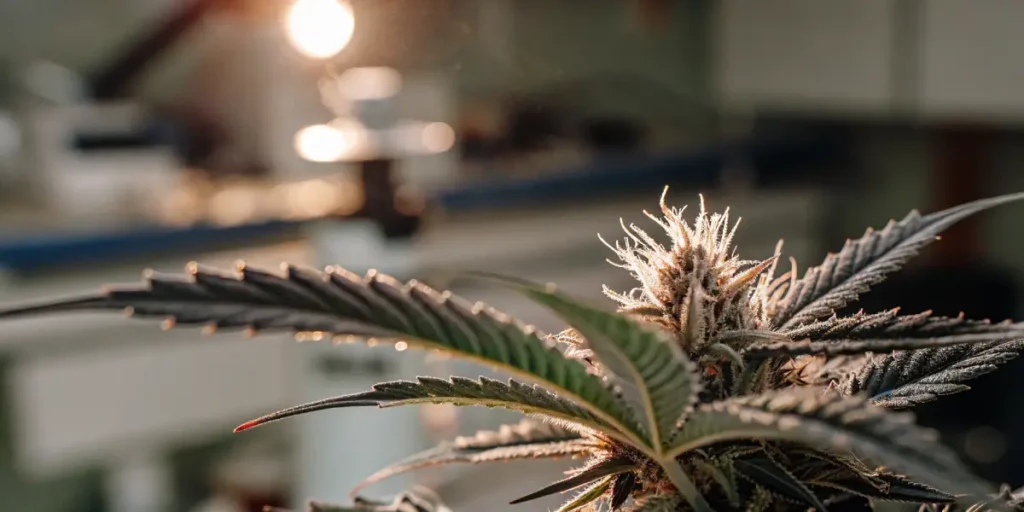
Water Deficit Effects on Cannabis Terpene Synthesis
When cannabis experiences water deficits, the effects on terpene synthesis can be profound. The plant, under a bit of stress, tends to ramp up its defense mechanisms. This includes an increase in terpene production, which not only protects the plant but also enhances its aromatic qualities.
Real-life examples abound in the growing community. Many have noted how water deficit effects on cannabis terpene synthesis can vary. With the right strain, such as “Jack Herer” from Blimburn Seeds, growers have reported a marked increase in the richness of the terpene profile.
Water deficit effects on cannabis terpene synthesis can serve as a powerful tool for enhancing the sensory experience of cannabis. By leveraging this natural response, growers can produce plants with complex and appealing aroma profiles that stand out in the competitive market.
However, the success of this approach hinges on careful monitoring and adaptation. Growers must stay attuned to their plants, adjusting water levels and other growing conditions to support optimal terpene synthesis while ensuring the plant remains healthy and productive.
Optimizing Cannabis Terpene Levels Through Irrigation Management
Irrigation management plays a crucial role in optimizing cannabis terpene levels. It’s not just about watering your plants but doing so with purpose. By regulating the water supply, you can influence how your cannabis plants express their terpenes.
For first-time growers, this might seem daunting. However, it can be as simple as observing your plants and noting changes over time. Experienced growers might use moisture meters to get precise readings, ensuring they hit that optimal stress point.
Optimizing cannabis terpene levels through irrigation management requires a strategic approach to watering. By tailoring irrigation schedules to the specific needs of each strain, growers can encourage maximum terpene production while maintaining plant health.
Besides to moisture meters, tools like automated irrigation systems can provide even greater control over water delivery, allowing for precise adjustments that align with the plant’s growth stage and environmental conditions. This level of control is essential for achieving consistent and high-quality terpene profiles.
- Monitor plant response to water stress.
- Adjust irrigation schedules based on plant strain.
- Use tools like moisture meters for precision.
- Observe changes in aroma and flavor.
- Document your findings for future grows.

FAQs
What is the impact of water stress and terpene expression in cannabis?
Water stress influences terpene expression by stimulating the plant’s natural defense mechanisms. This results in a more enhanced terpene profile, giving the cannabis a richer aroma and flavor. For growers, this means a more marketable product with potentially higher value.
By strategically applying water stress, growers can manipulate the plant’s environment to produce desired terpene profiles. This technique requires careful monitoring and an knowing of how different strains respond to water availability.
The impact of water stress and terpene expression in cannabis extends beyond just improving aroma and flavor. It also involves creating a more resilient plant that can thrive in less-than-ideal conditions. This capability can be particularly valuable in regions with limited water resources.
Additionally, the enhanced terpene profiles resulting from water stress can provide a competitive edge in the marketplace. As consumers increasingly seek unique and flavorful cannabis products, growers who can deliver complex terpene profiles will likely see increased demand for their products.
How does cannabis terpene expression under drought conditions benefit growers?
Drought conditions can push cannabis plants to increase terpene production. This reaction is part of the plant’s survival strategy, leading to a stronger scent and flavor profile. Growers benefit by offering a product with unique sensory characteristics that can stand out in the market.
This approach requires a balance between stress and recovery. By managing water levels carefully, growers can enhance terpene expression without harming the plant’s health, leading to a more robust crop.
Beyond just enhancing sensory qualities, cannabis terpene expression under drought conditions can also contribute to a more sustainable growing practice. By using water more efficiently, growers can reduce waste and minimize their environmental footprint.
Furthermore, the skills and insights gained from managing terpene expression through drought conditions can be applied to other aspects of cannabis cultivation. This knowledge can help growers optimize various factors that influence plant health and productivity, leading to more successful harvests overall.
Can water deficit effects on cannabis terpene synthesis vary by strain?
Yes, different strains respond differently to water deficits. Some strains, like “Gorilla Glue 4” may show a significant increase in terpene synthesis when water is limited. Others might require more careful management to avoid adverse effects.
Knowing the specific needs and responses of each strain is crucial. It allows growers to tailor their approach, maximizing terpene expression while ensuring the plant remains healthy and productive.
Water deficit effects on cannabis terpene synthesis are not uniform across all strains, making it essential for growers to research and experiment with different varieties. This exploration helps identify which strains are most compatible with water stress techniques.
By documenting these findings and sharing them within the growing community, cultivators can contribute to a broader knowing of how to optimize cannabis terpene expression. This collective knowledge benefits all growers by improving the overall quality and diversity of available cannabis products.
What tools can help optimize cannabis terpene levels through irrigation management?
Growers can use a variety of tools to optimize terpene levels through irrigation management. Moisture meters are a popular choice, providing accurate readings of soil moisture content. This helps in deciding when to water and when to hold back.
Additionally, documenting each grow cycle and observing plant responses can provide valuable insights. Over time, this data helps refine irrigation strategies, leading to consistently high terpene production.
Other tools that can assist in optimizing cannabis terpene levels through irrigation management include soil sensors and data logging systems. These technologies offer real-time monitoring and analysis, allowing growers to make informed decisions about watering schedules.
With these tools, growers can gain a deeper knowing of the relationship between water availability and cannabis terpene production. This knowledge empowers them to create precise and effective irrigation strategies that support healthy and productive plants.
Are there specific cannabis strains that respond well to water stress?
Certain strains have shown positive responses to water stress. “Blue Dream” and “Jack Herer” from blimburnseeds.com are known for their resilience and enhanced terpene profiles under controlled water stress conditions.
These strains can serve as a starting point for growers looking to experiment with water stress techniques. By choosing the right strains, growers can achieve impressive results in terpene expression and overall plant quality.
Besides to “Blue Dream” and “Jack Herer,” other strains may also thrive under water stress conditions, offering growers a range of options to explore. Selecting the right strains involves considering factors like climate and growing environment, as well as the specific characteristics desired in the final product.
By experimenting with various strains and documenting their responses to water stress, growers can build a robust knowledge base that informs future cultivation efforts. This experimentation ultimately leads to more successful and rewarding harvests, with plants that express their full aromatic and flavorful potential.




